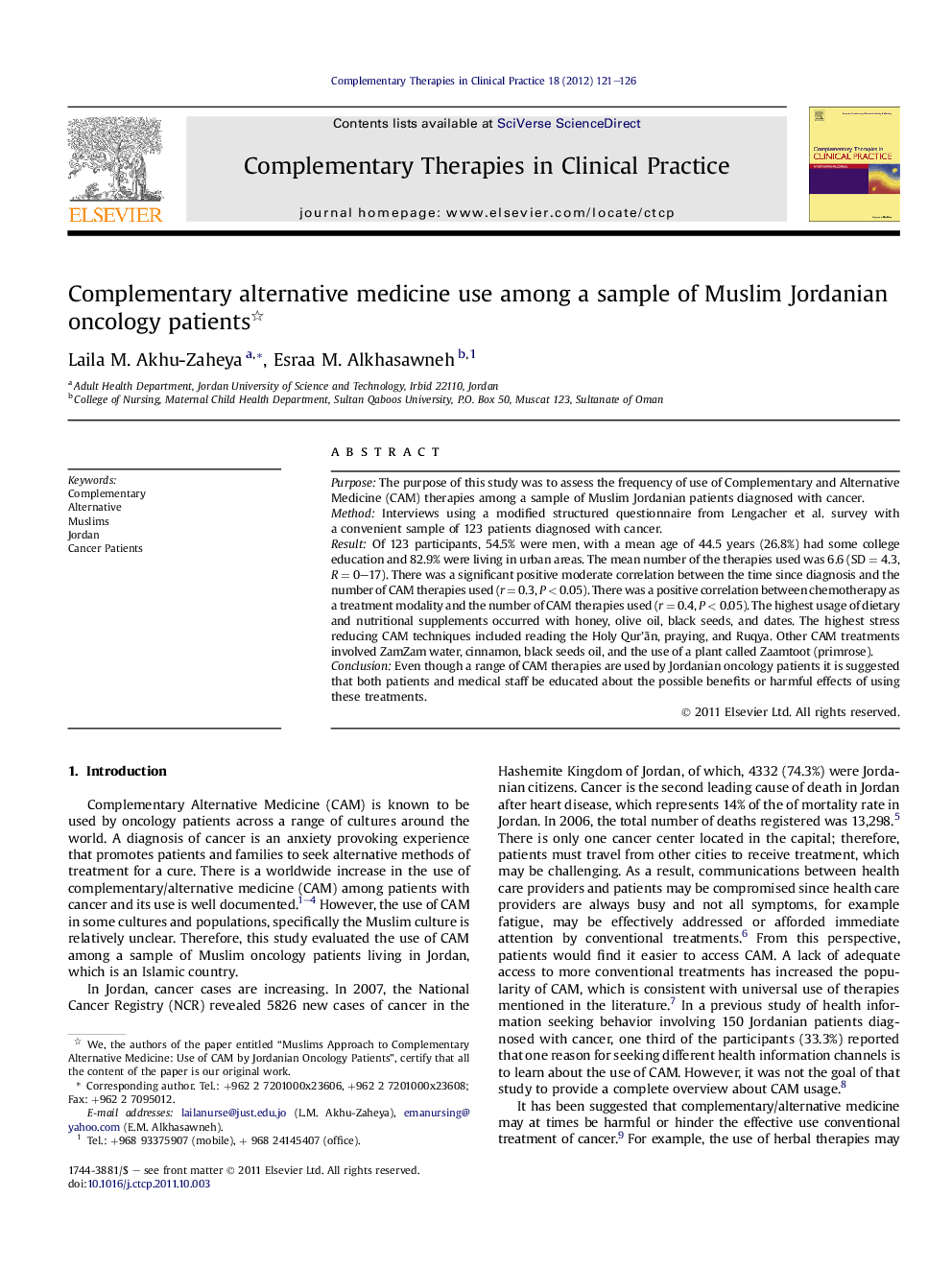| Article ID | Journal | Published Year | Pages | File Type |
|---|---|---|---|---|
| 2628461 | Complementary Therapies in Clinical Practice | 2012 | 6 Pages |
PurposeThe purpose of this study was to assess the frequency of use of Complementary and Alternative Medicine (CAM) therapies among a sample of Muslim Jordanian patients diagnosed with cancer.MethodInterviews using a modified structured questionnaire from Lengacher et al. survey with a convenient sample of 123 patients diagnosed with cancer.ResultOf 123 participants, 54.5% were men, with a mean age of 44.5 years (26.8%) had some college education and 82.9% were living in urban areas. The mean number of the therapies used was 6.6 (SD = 4.3, R = 0–17). There was a significant positive moderate correlation between the time since diagnosis and the number of CAM therapies used (r = 0.3, P < 0.05). There was a positive correlation between chemotherapy as a treatment modality and the number of CAM therapies used (r = 0.4, P < 0.05). The highest usage of dietary and nutritional supplements occurred with honey, olive oil, black seeds, and dates. The highest stress reducing CAM techniques included reading the Holy Qur’ãn, praying, and Ruqya. Other CAM treatments involved ZamZam water, cinnamon, black seeds oil, and the use of a plant called Zaamtoot (primrose).ConclusionEven though a range of CAM therapies are used by Jordanian oncology patients it is suggested that both patients and medical staff be educated about the possible benefits or harmful effects of using these treatments.
